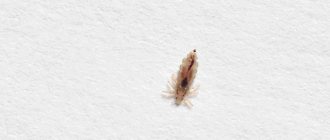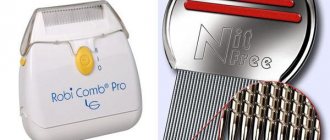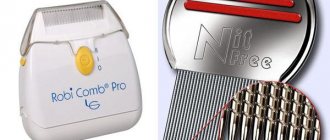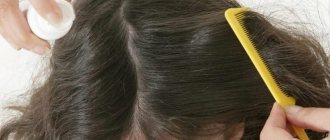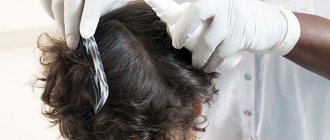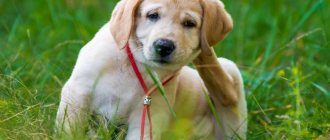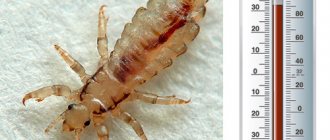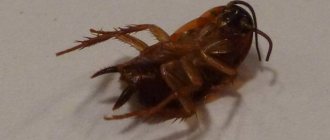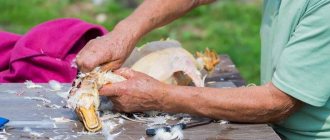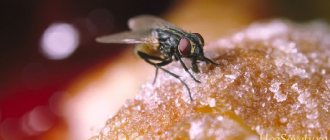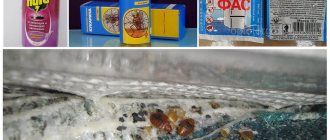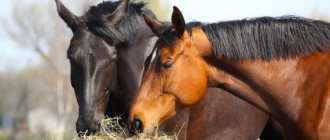- about the author
- VK profile
Svetlana Tarasova
Hairdresser-stylist with more than 8 years of experience, expert in the field of haircuts, styling, hair care, coloring.
Nits are eggs laid by lice. They can be found in humans in places where there is hair: on the head, chest, arms, legs, genitals, abdomen, and armpits. Even clean people who take care of themselves can develop nits. It is very important to destroy and remove them in time to prevent the appearance of new individuals and the spread of lice. To combat lice eggs, there are effective pharmaceutical preparations, as well as folk remedies.
Possible sources of infection
The most common route of infection with nits is household . Lice do not have the ability to fly, but can quickly crawl from an infected person to a healthy person in close contact. Insects reproduce quickly and lay eggs in a new place. There is a high probability of catching head lice in kindergarten and school, since children actively communicate with each other.
You can become infected in a bathhouse, sauna, or swimming pool if these establishments do not carry out appropriate sanitary treatment. When using a towel or clothing of an infected person, the risk of getting sick is also very high. In trains and hotels, the source of lice infection can be poorly washed and insufficiently dried bed linen.
In the intimate area, nits are found after sexual contact with a sick person. Moreover, the personal protective equipment used does not protect against parasites. The risk of infection increases many times with promiscuous sex life. A favorable environment for the appearance of lice and nits is created by poor hygiene of the body and head . Homeless people, alcoholics, tramps, and children from disadvantaged families are especially susceptible to the disease.
You can detect nits on your hair even after visiting a hairdresser. Poorly disinfected instruments become a source of lice infection. The disease often occurs when trying on or wearing other people's hats, scarves and hairpins.
Prevalence of head lice
How to get rid of lice at home
The risk group is children of preschool and school age, but they can become a source of infection for parents and others. In general, lice affects all segments of the population and the opinion that it is diagnosed only in people of low social status is stereotypical.
If we look at world statistics, then in the USA, lice is diagnosed in 6-12 million children aged 3-11 years, in Russia – about 300 thousand cases annually. However, these data do not reflect reality, because often the disease is not reported to the doctor, and therefore is not taken into account by statistics. In this case, the only option is to evaluate sales of pharmaceutical anti-lice products. And these data indicate that the problem is 3-4 times more widespread.
Head lice are more common and outbreaks of the disease are recorded in the summer, more often in girls, which can be explained by the length of the hair.
Symptoms of nits
It is not always possible to immediately recognize lice eggs; sometimes they are mistaken for dandruff. Therefore, it is important to pay attention to the signs indicating the presence of head lice. The main symptom of the disease is itching in the area where insects and nits accumulate . At night it intensifies and prevents a person from sleeping. Over time, redness and local irritation occur in areas where the skin is scratched.
Lice eggs, unlike dandruff, cannot be shaken off the hair. They are securely attached by the female and can only be combed out with a comb or comb. If the nit is not dead, then when you crush it with your fingers, a characteristic click will be heard and liquid will be released.
Another sign of lice is bluish-red spots on the skin. They occur after an insect bite due to hemorrhages and the concentration of hemoglobin breakdown components. The size of the spots can reach 1 cm in diameter. A rash, purulent blisters and small papules often appear on the affected skin.
Due to illness, not only a person’s sleep is disrupted, but also their appetite . There is general irritability, anxiety, and the temperature may rise. Problems with the digestive, nervous and cardiovascular systems often arise.
REFERENCE! You can detect nits and not confuse them with dandruff using a magnifying glass or Wood's lamp.
What happens if you don't remove lice?
The main symptom, sign and unpleasant factor when infected with lice is severe itching. It is impossible to live in peace when your head is constantly itching. Therefore, they try to remove lice as quickly as possible. However, in some cases, people do not pay attention to the itching. This may be due to decreased sensitivity of the scalp or other reasons. Some may feel that their itchy scalp is due to an allergy to shampoo, water, or hats.
If itching does not interfere with your life, you should pay attention to other symptoms of lice infestation:
- the appearance of insects - they can be seen with the naked eye, since the female’s body length reaches 0.4 mm, insects move along the hair, so with a certain amount of observation they can be noticed; if the hair is thick, you can comb it - when combing, you can find parasites;
- the presence of nits - lice eggs: these are very small white balls at the roots of the hair, with a large accumulation they are visible;
- bloody bite marks - when piercing the skin, the louse injects a substance into the skin that prevents the blood from clotting, so that a drop of blood flows out and remains on the surface;
- tangled and glued hair that forms tangles: they stick together due to waste products of lice;
- an unpleasant odor emanates from the hair .
If you do not remove lice, you can get the following complicated consequences of lice:
- severe scratching at the site of bites;
- allergic reactions;
- infection of scratched wounds;
- through wounds, the infection enters not only under the skin, but also into the blood, which is why it spreads throughout the body;
- in advanced cases, this can lead to dangerous diseases and even blood poisoning.
It's sad, but some parents believe that head lice in a child does not require treatment or is not treated at all. For children's health, infestation with lice and nits is especially harmful, since the psyche also suffers: the child becomes restless and irritable from constant discomfort. It is necessary to remove lice from everyone - both children and adults.
What do lice eggs (nits) look like?
The female lays many viable eggs during her life. They look like oblong capsules with a lid. The protective shell is covered with an adhesive substance, thanks to which the nits are firmly attached to hair and clothing. The length of the egg does not exceed 1 mm.
Live nits, unlike dead ones, have a white, slightly transparent color. They sparkle when illuminated. The dead membranes darken and acquire a yellow-gray tint, but also remain firmly attached to the hair.
How dangerous is lice?
Due to itching and scratching, pediculosis is dangerous due to the addition of a secondary infection, often Staphylococcus aureus. Fortunately, such complications are usually mild and local treatment – antiseptic treatment – is sufficient.
When pubic lice spread to the eyelashes, blepharoconjunctivitis can form - inflammation of the conjunctiva of the eye and skin of the eyelids. The disease is manifested by redness of the eyes, formation of crusts on the eyelids, discharge, a feeling of sand in the eyes, and in some cases it is difficult to open the eyes in the morning.
The anticoagulant that the louse injects into the blood can cause an allergic reaction, including dermatitis. This disease is characterized by the appearance of a rash, as well as increased itching, which lasts up to several weeks.
To be frank, despite the widespread dissemination of information, head lice is still considered a disease of people with low social status and is associated with uncleanliness. Social labeling is another possible complication, especially among children.
Among lice, body lice are considered the most dangerous; they are most often carriers of relapsing and typhus, as well as trench fever.
If lice are found on a child, what should you do? Don’t waste time and start active treatment.
When do eggs become larvae?
A nit is the first stage in the formation of a louse . The development period from egg to adult insect can be from two to four weeks. After 5-10 days, a larva emerges from the nit. The period of its ripening directly depends on favorable conditions. The most comfortable temperature for the development of larvae is 36.6. When the favorable environment changes, the life cycle of insects does not stop, but only slows down.
Is it possible to get rid of nits in 1 day?
Lice and their eggs can only exist on human hair . Under other conditions they die. Therefore, to quickly remove nits, you can shave the hair on your head and other parts of the body. The parasite will have nothing to cling to and will lose viability. Of course, the method is radical and not suitable for everyone. Not every woman or girl agrees to shave her head hair, but men can easily use this method and quickly get rid of insects.
SHAMPOOS
There are also many shampoos for head lice: Pedilin, Anti-bit, Reed, Paranix, Sifax, tar.
- It is better to study the most popular options in advance before going to the pharmacy in order to get rid of lice in one treatment.
- They are applied to damp hair and whipped into foam with massaging movements.
- According to the instructions, you need to wash it off after 10-15 minutes, but as practice has shown, it is better to leave it on for about 30-40 minutes.
- True, then the risk of allergic reactions will increase.
- Then you need (in some cases) to wash your hair with regular shampoo, and, most importantly, to comb out nits and dead lice with a special comb.
How to remove dry (dead nits) from hair?
Dead lice eggs adhere well to hair, but they can and should be removed. For this, it is recommended to use 5-6% vinegar. Add two tablespoons of acid to one liter of water and rinse your hair with this solution. If the vinegar is 10-15%, then only 1 tbsp is required. spoon of acid for the same volume of water.
After rinsing, hair should be combed with a fine-toothed comb . The remaining eggs should be removed by hand. The method is quite long, but effective.
Pros and cons of using folk remedies
If the question of how to treat head lice is being decided, not only the properties of different substances are studied, but also their positive qualities:
- low cost;
- safe use, due to the use of non-toxic substances in most cases;
- ease of processing;
- facilitating the combing procedure, while the substance that retains nits is destroyed.
To the disadvantages
THERE ARE LOW EFFECTIVENESS OF MOST SIMILAR METHODS.
Only those based on the use of fatty components or acids are distinguished, since in this case nits are better separated and adult individuals die (due to blockage of the respiratory system).
In addition, after using traditional recipes, an unpleasant and persistent odor remains, which is often difficult to remove. If you use fatty components, you have to wash your hair several times.
Basic ways to combat nits
To quickly remove lice eggs, you can use pharmaceutical or folk remedies, as well as combing.
Pharmacy drugs
Pharmacies have effective means for getting rid of nits:
- Pediculen Ultra. Destroys lice and nits. The lotion should be applied to the affected areas for 20 minutes. After exposure, rinse with warm, clean water. Then comb out the parasites with a comb. If necessary, repeat the procedure after a week. It is not recommended to use the product for children aged 0-3 years.
- Medifox. Available in the form of a cream or gel for treating hair and a 5% concentrate for making an emulsion. The composition contains permethrin, which destroys insects and eggs. Preparation of aqueous emulsion: mix 0.5 cups of water and 4 ml of concentrate. Immediately apply the prepared product to areas with insects. After 20 minutes, rinse the treated areas with water. It is not recommended to use the drug for babies under one year of age.
- Nittifor. The product is used externally only. It is made in the form of a cream, as well as a water-alcohol solution. Method of treatment: rub the cream into the affected areas and wait a few minutes. After exposure, comb out dead parasites with a special comb or comb. The water-alcohol solution should be applied to problem areas and left for 40 minutes, then rinsed with water. The treatment must be repeated after five days. Children under five years of age are prohibited from using the drug.
- Spray Pax. Used to destroy lice and nits living on the head. Before use, cover your shoulders with a towel or cloth. Spray the aerosol onto your hair and leave for 30 minutes. In this case, you do not need to cover your head with anything. At the end of the procedure, wash your hair with baby soap and rinse your hair thoroughly. Comb out dead insects and nits.
- Veda-2. Shampoo based on permethrin. Can be used against pubic and head lice. Destroys eggs and parasites from the first use. Apply to damp hair for 15 minutes, then rinse under plenty of water.
Folk remedies
You can deal with nit eggs using folk remedies. They are available, inexpensive and effective in treatment.
- Tar soap. Hair needs to be wet and lathered with soap. Then put a plastic cap on your head, wrap it in a towel and wait two hours. Finally, wash your hair well and remove dead insects and their eggs.
- Apple vinegar. Bring vinegar to 3% concentration by diluting with water. Apply with a cotton swab to problem areas. After half an hour, rinse with water. Repeat treatment for at least three days in a row.
- Birch tar. You need to take three tablespoons of butter and tar. Mix the ingredients and treat the affected areas with the resulting product. Treat for at least 10 days.
- Tansy. To obtain a decoction, you need to take a tablespoon of the herb and pour boiling water (0.5 l) over it. Leave for one hour, wrapped in a warm towel. Rub the solution into the scalp daily for a week. Rinse with broth every other day. After the procedure, comb out lice and nits every day.
- Cranberry juice. Mash the berries and squeeze out the juice. Add a little water, then moisten the gauze and apply to hair for 15 minutes. Treat the head for 10 days. After use, always wash your hair with warm water. The acid contained in the berries will destroy insects as well as their eggs.
Combing
Nits can be removed by combing out using a special comb or comb. Before the procedure, it is necessary to provide good lighting and lay a sheet or oilcloth on the floor. Lightly wet your hair and divide it into thin strands.
Do you know how to comb out lice?
Not really
It is better to purchase a special comb at a pharmacy . It has very frequent hard teeth with rounded ends, it combs out parasites and nits well and does not damage the hair. There are even combs that pass electric current through the teeth. It is safe for humans, but has a detrimental effect on lice and their eggs.
If you don’t have a comb, you should purchase a flat comb with fine teeth to comb out insects and nits . Carefully process each strand of hair. The procedure should last at least half an hour. Repeat these steps daily until all parasites and their eggs have been combed out.
ATTENTION! If a louse or nit remains in the hair after combing, then it will not be possible to cope with lice. The insects will multiply again, and you will have to fight them again.
EMULSION BENZYL BENZOATE
For example, benzyl benzoate emulsion is 20% for adults and 10% for children.
- Apply the emulsion to your hair.
- Lightly rub into the skin and curls.
- Tie the treated hair with a scarf and leave for half an hour.
- After the required time, rinse your hair under the tap.
- We rinse with 5% vinegar.
- Then wash your hair as usual using shampoo or soap.
- To remove remaining nits, you need to comb out with a fine comb.
How effective the procedure was was determined after a day.
Pros: low cost, good effect; disadvantages – unpleasant smell, there are contraindications. It is recommended that children under 5 years of age dilute the emulsion in a 1:1 ratio with boiled water.
The price for a 50 ml bottle is around $0.3.
Popular myths about nits
People have learned to treat severe infections, but still cannot cope with parasites. There are still many myths about nits that humanity believes in.
Expert opinion
Alexandra Valerievna
Doctor-Trichologist
Myth 1 . If there is one person in a family infected with lice, then all members of this family should be treated with anti-lice medications.
For prevention, there is no need to undergo treatment; it is enough to limit the contact of a sick person with healthy people.
Myth 2 . Nits jump from head to head.
This is wrong. They can't jump. You can only become infected if a louse crawls from an infected head to healthy hair.
Myth 3 . Insects cannot stand the smell of tea tree and lavender oils.
There is no scientific evidence of this fact, since no studies have been conducted.
Myth 4 . You can become infected with lice through clothing and bedding.
This is possible if underwear and clothing are used immediately after a sick person. Without feeding on human blood and skin flakes, the louse will not survive. That is why bedding and clothes are not treated; it is enough to simply wash them well.
Myth 5 . Anti-lice products only work on insects and are useless against nits.
Most products only really kill insects. However, there are several lotions, shampoos and creams available against nits.
Myth 6 . If you dye your hair and wash your hair regularly, parasites will not take root.
Paint has a detrimental effect on insects - that's a fact. There is just no evidence that lice die completely. People with clean hair also become infected with lice.
Myth 7 . Kerosene is effective against nits.
The product destroys parasites, but is too aggressive for human skin. There is a high probability of getting burns, irritation or dermatitis.
Types of lice
Types of lice
In clinical practice, there are three forms of lice, which are caused by different types of lice. Each form has its own clinical course and treatment.
Head lice
The most common type of lice and it is exclusively a human parasite. Transmission from animals is not possible. The head louse itself is small in size, has paws, thanks to which it clings to hair and can move quickly: with a size of 2-4 mm, it overcomes up to 23 cm per minute.
One female lays 200-300 eggs in a life cycle that lasts about a month. It attaches the eggs (nits) to the hair shaft, close to the scalp, using an adhesive substance that holds it securely. After about 9 days, an individual - a nymph - hatches from the cocoon, and within half an hour she begins to drink blood. The nymph goes through several molts before becoming an adult; after 2 weeks it will begin to produce offspring.
Head lice are dependent on the host and their food – blood. If there is no food, then the insect dies from hunger after 48-55 hours. Temperature also has an effect; when it rises, the natural development cycle is disrupted: the female stops laying eggs, and the nits freeze in their development.
By the location of nits or empty shells, one can judge how long ago the infection was. If the nits are located at a distance of a couple of centimeters from the scalp, then the infection occurred 1.5-3 months ago.
Body lice
This is the only species that lives outside the host’s body, but in the folds of clothing or bedding. However, body lice also cannot live without a person and his blood.
The body louse lives for about 18 days, and during this time the female can give birth to 140-250 individuals. After laying eggs, a nymph hatches within 7-8 days, which becomes an adult after 10-12 days, but they begin to drink blood almost immediately.
Typically, bites are noticeable in places of close contact with tissue: waist, neck, legs.
Pubic lice
Infestation with pubic lice is called phthiriasis or lice pubis. The name itself indicates the main habitat of insects, but they can also spread to other parts of the body: armpits, chest hair in men, eyelashes, etc.
The pubic louse is small in size, almost round, and due to its unique legs, it clings even to short hairs, so shaving the groin area does not bring significant results.
During the life cycle, the female lays about 50-75 eggs. After 6-8 days, the nymphs hatch and begin the life cycle of becoming an adult.
Up to 30% of those infected with pubic lice suffer from one or more sexually transmitted infections. It is reported that in recent years there has been a sharp decrease in incidence, which is associated with the popularity of hair removal and sugaring of the bikini area.
Features of the destruction of nits in children
If nit eggs are found on your baby's head, it is better to shave him. This will help prevent head lice, and your child will quickly grow new hair. When treating a disease with pharmaceutical drugs, you should carefully read the instructions and take into account all contraindications. Some medications cannot be used by children under one year of age; there are medications that are only approved for children aged five years and older. Using folk remedies, you need to monitor the body's reaction. If allergies, nausea, dizziness, or skin rashes occur, treatment should be stopped and consult a doctor.
IMPORTANT! Clothes and bedding of a sick child must be washed at a water temperature of at least 90 degrees above zero. Use baby laundry detergent or laundry soap. After washing, the laundry must be dried and ironed with a hot iron or treated with steam.
Sprays
Sprays (Pedikulen, Paranit, Para Plus) are very convenient to use. They need to be applied to dry hair, wait a certain time, then rinse off. But the downside is that most of them do not kill nits.
Therefore, combing cannot be avoided - this is the main disadvantage.
Depending on the situation, you should choose a specific remedy. You should consider contraindications, read reviews, consult with friends, or write anonymously on the forum.
In case of very severe infection, Pediculen Ultra is used.
Para Plus is recommended for use by children from 2.5 years of age.
The main plus of the sprays is very convenient to use.
INSTRUCTIONS FOR USE OF SPRAYS USING THE EXAMPLE OF PEDICULEN ULTRA:
- Apply to dry hair until the hair is completely moisturized in areas where nits and lice accumulate.
- Wait 30 minutes or more, see instructions.
- Rinse off with running water.
- Wash your hair with shampoo.
- Comb out insects with a comb. Place a towel under your hair so as not to wet your clothes and falling insects will remain on it and not on your clothes; wash it after the procedure.
A handy addition is a magnifying glass.
After use, the hair is clean, but it is worth checking it after a few days.
Are there any remedies for nits without scratching?
By dyeing your hair with chemical hair dye, you can kill lice and their eggs. The peroxide it contains acts as a poison on insects. Parasites quickly suffocate and die. After dyeing and combing the hair, the remaining nits become invisible.
If you cannot comb out all the eggs, you can rinse your hair with an aqueous solution of potassium permanganate. It will give a beautiful shade and cover up dead nits. However, it is recommended to use this method only on dark hair.
Choosing an effective remedy
The fight against nits is a specific process. Most drugs have little effectiveness against representatives of this stage of insect development. Choosing the most effective remedy is simple: you need to combine different types of control to destroy lice.
The mechanical method of removing eggs is always taken as a basis. Regular thorough treatment is the key to obtaining effective results. Additionally, drugs are used that reduce the stability of nit attachment. Without them, even the mechanical method will become ineffective. As the third component, 1 of the suitable insecticides is selected.
Prevention of re-infection
You can get rid of nits only if they are completely removed from the hair. Moreover, there should be no lice left either, otherwise they will lay eggs again. To avoid re-infection with head lice, certain preventive measures must be followed:
- Change bedding frequently (at least once a week).
- Maintain good body hygiene and wash your hair regularly.
- Use only a personal towel.
- Avoid questionable sexual relations.
- Keep your underwear clean.
- Periodically inspect the head and areas of the body covered with hair.
- Do not use other people's hats and clothing.
- Remove excess body hair.
- Refuse to visit swimming pools, saunas, baths where sanitary standards are not observed.
- At home and away, use only a personal hair comb.
- Wash clothes and bed linen with special products, dry well and iron with a hot iron.
The presence of nits indicates a lice infection. This is a dangerous disease that must be treated quickly to avoid serious consequences . The disease is transmitted through household and sexual contact. You can get rid of lice eggs using folk remedies or pharmaceutical preparations; combing with a comb has a good effect. To prevent re-infection, it is necessary to take some preventive measures.
- about the author
- VK profile
What else must be done when removing lice?
Pediculosis is a contagious disease. This means that if lice appear on one of the family members, it is necessary to examine all the others and take preventive measures.
It is better to use any anti-lice products in the bathroom so that the lice removed from the hair do not spread throughout the apartment.
During treatment, the person who helps with the application and rinsing of medications, who combs hair and monitors the progress of treatment, must carefully protect themselves. When combing, cover your shoulders and back with a white towel so that you can see the falling insects. The room and everything in it must be washed thoroughly after manipulation. For disinfection, you need to use the same pediculicidal agents, for example, MediLis-Permifen.
Important!
Lice and nits can be found not only in the hair, but also in the patient’s personal belongings. All clothing, bed linen, and towels should be washed at high temperatures.
You can use a pediculicide solution for soaking. Things that cannot be washed can be treated with a steam cleaner, ironed or exposed to frost - at very high or low temperatures the pests die. It is also better to treat upholstered furniture, mattresses, blankets and pillows with a steam generator or dry cleaning.
Head lice do not live in furniture, but they can wait out “difficult times” in it and then continue to parasitize people.
For difficult-to-handle items that cannot be dry cleaned, washed or ironed, you can use this method. Pack them as tightly as possible in a thick plastic bag and leave them in this form for 2 – 4 weeks. During this time, all adults and even nits will die of hunger and will not produce offspring. This method is suitable, for example, for outerwear.
It is also better to rinse the entire apartment with a solution of anti-lice or insecticide. In case of severe damage, you can call special services. The main thing is that the fight must be comprehensive so that not a single individual or egg remains viable. This is the only way to remove these parasites.
At home you can use the following products:
- hellebore water - suitable for treating thin and short hair, can be used to treat children, but it is important that there are no wounds on the skin, otherwise it will corrode them and cause an allergic reaction;
- washing your hair with regular shampoo, but with the addition of lavender, tea tree, eucalyptus oil , etc. - the use of essential oils with a pungent odor does not kill insects, but plays more of a preventive role, repelling them;
- rinsing with decoctions of herbs (mint, wormwood, wild rosemary) or rubbing a paste of these herbs into the roots of the hair - has a weak effect and can help with minor damage; a mask of minted garlic or onion - use this method with caution, as it can cause damage to the scalp irritation appears;
- wrap of cranberry juice or mint cranberries - in an acidic environment, insects can die, and their eggs will be better peeled off from the hair.
An unexpected and not very natural product that can be mentioned here is hair dye containing ammonia. If you dye her hair, the parasites will die. But it is worth remembering that not all modern paints contain ammonia.
All home remedies have one drawback - they will not help if the infection is severe.
Considering the fact that lice removal begins when there are already dozens of them in the head, and there are already hundreds of nits on the roots of the hair, then using folk remedies is pointless. Moreover, if you waste time on them, you can trigger the disease. During this time, the parasite population can only increase. It is better to immediately switch to professional drugs.
